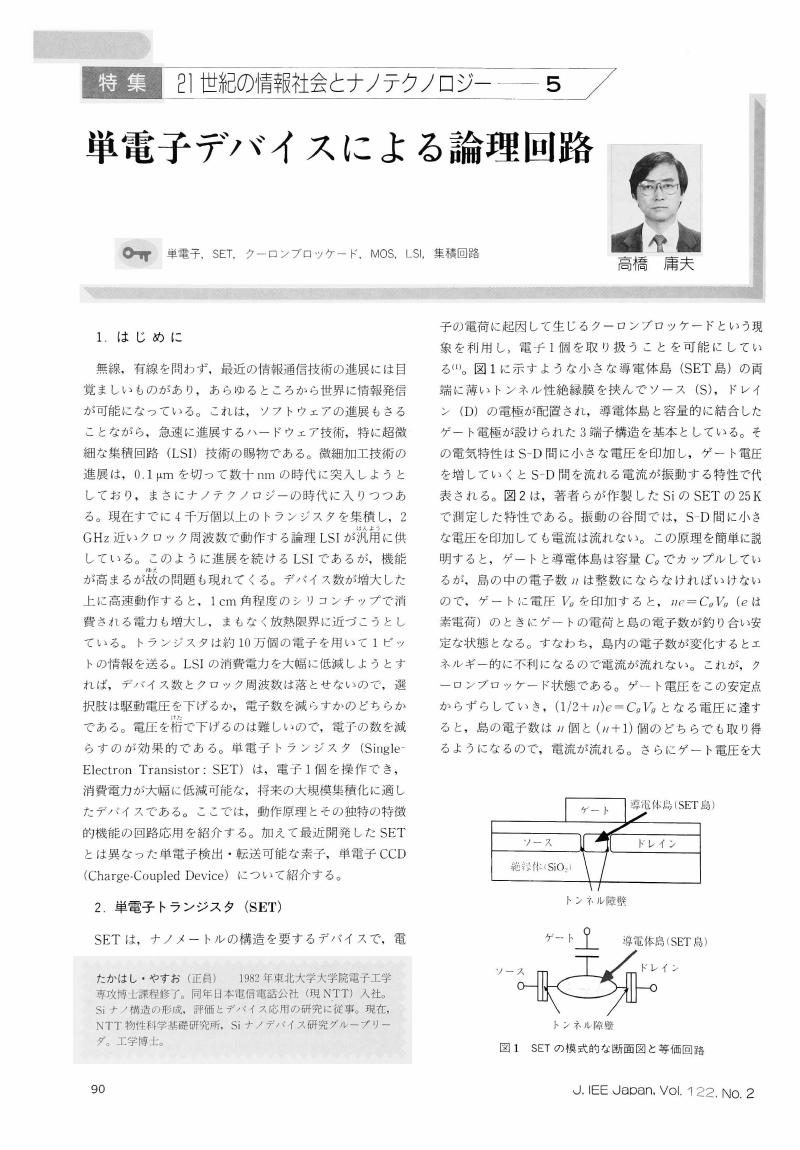1 0 0 0 GPS-TX による越冬期のマガモ,カルガモの行動追跡
- 著者
- 嶋田 哲郎 植田 睦之 高橋 佑亮 内田 聖 時田 賢一 杉野目 斉 三上 かつら 矢澤 正人
- 出版者
- 特定非営利活動法人バードリサーチ
- 雑誌
- Bird Research (ISSN:18801587)
- 巻号頁・発行日
- vol.15, pp.A15-A22, 2019 (Released:2019-08-02)
- 参考文献数
- 14
鳥類や哺乳類の行動調査を目的として開発されたGPS-TXは,発信機内のGPSにより得た位置情報を無線で受信局に送信し,受信局で記録を残すシステムである.2017/18年と2018/19年の越冬期に伊豆沼・内沼周辺においてマガモ Anas platyrhynchos 16個体,カルガモ A. zonorhyncha 2個体のGPS-TXによる追跡を行った.マガモは夜行性で,雄雌ともに夜間の行動パターンにはばらつきがあり,沼内に滞在する個体がいた一方,沼外では伊豆沼から北側に位置するハス田や湛水田,ため池,河川などに分布した.カルガモもマガモと同様に夜行性で,沼から北側の狭い用水路(川幅<5m)やハス田,湛水田などに分布した.河川や広い用水路にはみられず,狭い用水路でみられた割合が高かったことがマガモと異なる点であった.今後,GPS-TXの改良とともに追跡できる対象種が増えていく中で,越冬期のカモ類追跡においてさらなる展開を期待できる.
1 0 0 0 OA 微生物生成水酸化鉄の地球化学:無機水酸化鉄と異なる結晶構造や微量元素の吸着能
- 著者
- 菊池 早希子 柏原 輝彦 高橋 嘉夫
- 出版者
- 一般社団法人日本地球化学会
- 雑誌
- 地球化学 (ISSN:03864073)
- 巻号頁・発行日
- vol.51, no.4, pp.171-184, 2017-12-25 (Released:2017-12-25)
- 参考文献数
- 100
Adsorption chemistry of Fe(III) oxyhydroxides is one of the important topics because of their considerable impacts on trace element geochemistry in the surface environment. Although inorganic Fe(III) oxyhydroxides have been used as an absorbent for laboratory studies, there is a growing recognition that biogenic iron oxyhydroxides (BIOS) are dominant in the environment. The microbial organic materials in BIOS can dramatically change mineralogical and adsorptive characteristics of Fe(III) oxyhydroxides, but the details and their differences from inorganic Fe(III) oxyhydroxides have not been specified well. In this review, we introduce our recent findings of BIOS especially focusing on their crystal structure, mineral transformation during early diagenesis, and trace element adsorption. The microbe-mineral interactions in BIOS (i) change the mineral structure of ferrihydrite, (ii) limit the ratio of BIOS reduced under anoxic condition, and (iii) enhance adsorption of cesium cation whereas inhibit anion adsorption of selenate and selenite ions compared to inorganic Fe(III) oxyhydroxides. These results will provide new insight into the geochemical role of BIOS and also contribute to other scientific fields such as environmental engineering, environmental microbiology, and ore geology.
1 0 0 0 OA 袖珍和漢雅俗いろは辞典
1 0 0 0 近現代フランス文学におけるモニュメントの諸相
平成29年度は前年度に引き続きエミール・ゾラの作品におけるモニュメントの表象の分析を行うとともに、ゾラ以外の作家とモニュメントの関係について検討した。研究分担者の高橋は、パリのヴァンドーム広場にあるナポレオン円柱に着目し、ゾラの『ルーゴン・マッカール叢書』の小説、具体的には『獲物の分け前』『居酒屋』『壊滅』『愛の一ページ』における登場人物たちと、ナポレオン伝説のモニュメントといえるこの円柱との関わりに注目して、ナポレオン円柱に対する作中人物の多様な視線の意味を政治的、社会的な観点から検討し、その成果を学術雑誌に論文として発表した。そして平成29年10月29日に名古屋大学東山キャンパスで開催された日本フランス語フランス文学会2017年度秋季大会において、北海道大学准教授の竹内修一氏をコーディネーター、研究代表者の田中と研究分担者の福田をパネリストするワークショップ「パンテオンと作家たち」を実施した。このワークショップでは、第三共和政以降にパリを代表するモニュメントのひとつであるパンテオンで行われる国葬、つまりパンテオン葬を取り上げ、田中がヴィクトル・ユゴーの、福田がゾラの、竹内氏がアンドレ・マルローとアレクサンドル・デュマのパンテオン葬について報告した。これらのパンテオン葬の検討によって、フランスという国家と文学が取り結ぶ関係の変遷について明らかにした。その成果を踏まえたうえで、田中と福田はそれぞれ異なった視点からゾラのパンテオン葬を検討した論文を学術雑誌に発表した。
1 0 0 0 OA 気管チューブカフ上部吸引の有効性に関連する因子の検討
- 著者
- 中澤 弘子 土屋 守克 高橋 誠一 加藤 祐樹 神谷 円 吉村 将規
- 出版者
- 一般社団法人 日本環境感染学会
- 雑誌
- 日本環境感染学会誌 (ISSN:1882532X)
- 巻号頁・発行日
- vol.32, no.1, pp.18-22, 2017-01-25 (Released:2017-03-06)
- 参考文献数
- 7
近年,人工呼吸器関連肺炎(VAP)の予防策の一つとして,気管チューブに付属した専用のポートから吸引する,カフ上部吸引(subglottic secretion drainage:SSD)の有効性が示されている.本研究では,気管挿管,気管切開を行った患者56名を対象とし,カフ上部から吸引される分泌物の有無の関連因子を検討した.結果,気管切開チューブを使用している患者の方が,気管内チューブを使用している患者に比べ,約5倍カフ上部から分泌物が吸引されやすい傾向にあることが明らかとなった.その要因として,「チューブ挿入部周囲の組織の構造および位置」,「気管チューブの構造」の2点が推察された.今後は,カフ上部吸引回数やカフ上部吸引のタイミング,吸引量などの因子を加えて検討を行い,サイレントアスピレーションの予防に努める必要がある.
1 0 0 0 沖縄の多彩な皮膚病の現状と、疾患背景の理解
- 著者
- 高橋 健造
- 出版者
- 日本ハンセン病学会
- 雑誌
- 日本ハンセン病学会雑誌 (ISSN:13423681)
- 巻号頁・発行日
- vol.88, no.2, pp.39-41, 2019
- 被引用文献数
- 1
- 著者
- 高橋 健一郎
- 雑誌
- 文化と言語 : 札幌大学外国語学部紀要
- 巻号頁・発行日
- vol.66, pp.117-135, 2007-03
1 0 0 0 OA リムスキー=コルサコフ『我が音楽生活の年代記』 : 翻訳の試み (2)
- 著者
- 高橋 健一郎 タカハシ ケンイチロウ Кэнъитиро Такахаси
- 雑誌
- 文化と言語 : 札幌大学外国語学部紀要
- 巻号頁・発行日
- vol.79, pp.130-161, 2013-11
1 0 0 0 アテ(ヒノキアスナロ)人工林における表土侵食量
- 著者
- 小倉 晃 高橋 大輔
- 出版者
- 石川県林業試験場
- 雑誌
- 石川県林業試験場研究報告 (ISSN:03888150)
- 巻号頁・発行日
- no.38, pp.27-32, 2006-03
石川県鹿島郡中能登町石動山県有林で、ヒノキアスナロ(以下、アテ)人工林の表土浸食の実態および表土浸食防止機能の評価方法開発を行った結果、間伐手遅れのアテ林分では、下層植生が消滅、林床被覆物・表土の流出が起こり、4.6-11.7/ha/yr流出していると推測された。また、立木密度と傾斜からアテ人工林における年間浸食量の予測方法を確立した。さらに、USLE式におけるアテの作物管理係数が明らかになったが、林小班単位でのUSLE式による表土浸食防止機能評価はさらなる検討が必要であった。
1 0 0 0 OA 首里城下町の都市計画とその基本理念
- 著者
- 高橋 誠一
- 出版者
- 関西大学東西学術研究所
- 雑誌
- 関西大学東西学術研究所紀要 (ISSN:02878151)
- 巻号頁・発行日
- vol.34, pp.A1-A39, 2001-03-31
1 0 0 0 OA 杜牧撰『注孫子』の故事と杜佑撰『通典』に関する一考察
- 著者
- 高橋 未来
- 出版者
- 東京学芸大学国語国文学会
- 雑誌
- 学芸国語国文学 (ISSN:03879135)
- 巻号頁・発行日
- vol.48, pp.123-133, 2018 (Released:2018-10-11)
1 0 0 0 OA シートベルトによる腸管・腸間膜損傷の受傷機序の検討
- 著者
- 里村 仁志 佐々木 欣郎 室井 大人 高橋 雅一 勝又 大輔 山口 悟 中島 政信 加藤 広行
- 出版者
- 日本腹部救急医学会
- 雑誌
- 日本腹部救急医学会雑誌 (ISSN:13402242)
- 巻号頁・発行日
- vol.34, no.4, pp.837-840, 2014-05-31 (Released:2014-12-19)
- 参考文献数
- 14
2010年4月から2013年3月までにシートベルトに起因する鈍的腸管・腸間膜損傷を6例経験した。損傷部位は十二指腸が2例,小腸間膜損傷に小腸損傷を伴うものが2例,小腸間膜損傷のみのものが2例であった。十二指腸穿孔の2例はいずれもBMIが低いため,シートベルトと脊椎に十二指腸水平脚が圧迫されて,内圧が急激に上昇したため穿孔したものと考えられた。腸間膜のみの損傷であった2例はシートベルトに直接圧挫されて間膜が裂傷を負ったものと思われた。腸間膜損傷に腸管の離断や穿孔が伴っていた2例は前述したメカニズムの複合による受傷と類推された。3例に開腹歴を認め腹腔内での癒着,組織の硬化が腸管・腸間膜損傷に影響した可能性が示唆された。シートベルト損傷はベルト痕を含めた腹部の視触診やFAST,CTなどの画像診断に加えて,開腹歴やBMI等も考慮して慎重に診断する必要があると思われる。
1 0 0 0 OA わが国における食肉生産を目的としたイノシシ飼育の展開に関する予察的研究
- 著者
- 高橋 春成
- 出版者
- 公益社団法人 日本地理学会
- 雑誌
- 地理学評論 Ser. A (ISSN:00167444)
- 巻号頁・発行日
- vol.57, no.11, pp.781-790, 1984-11-01 (Released:2008-12-25)
- 参考文献数
- 17
- 被引用文献数
- 2 1
In recent years, wild boar farms have appeared in various areas in order to produce their flesh. Although wild boars have been treated mainly as vermin or game, such new domestication is also considered to be one of the biogeographical themes. The author made a preliminary study of these phenomena in Japan through questionnairing. New domestication of wild boars is divided into two forms such as raising of wild boars and raising of ino-buta (hybrid between wild boar and pig). The former has developed since around 1975 when hunting number of wild boars began to decrease in spite of increasing demand for their flesh. The latter has been introduced to improve fleshy substance in pig since around 1970 and to solve problematic factors on number of litter and fattening term in raising of wild boars. With regard to operation, there are three types such as individual operation, group operation and entrusting. Less than 50 head of wild boars are raised in individual operation, but there are some large scale raising in group operation and entrusting. Especially, entrusting is thought to be one of the effective systems that make security of labor and land for enlarging a scale. Generally, operators give assorted feed for pig keeping to wild boars from the view point of facility and reduction of labor. In raising of wild boars, potatoes, cereals, edible herbs, grass, nut, and bone and scraps of fish and chicken are often supplied in order to improve the quality of flesh. Excrementitious matter is utilized as manure almost all. The distribution of wild boars is as follows. There are two courses in the trade of wild boars. One is the trade of little wild boars to those who wish to keep them or want to keep more wild boars. The other is the trade of fattened one as flesh or mating. Main destinations of flesh are restaurants, hotels, and wholesale stores of flesh of wild boars. In the trade of ino-beta, fattened one is shipped for flesh, and little one is scarcely dealt with. Although new domestication of wild boars for flesh is an interesting attempt, there are some problems to be solved such as insufficiency of labor and land for enlarging a scale, techniques of raising, unbalanced connection between producer and consumer, and fluctuations of market prices.
1 0 0 0 OA 露天掘り鉱山における発破規格及び岩盤状態が起砕物の飛翔挙動に与える影響
- 著者
- 高橋 良尭 山口 耕太郎 笹岡 孝司 濱中 晃弘 島田 英樹 一ノ瀬 政友 久保田 士郎 佐分利 禎
- 出版者
- 一般社団法人 資源・素材学会
- 雑誌
- Journal of MMIJ (ISSN:18816118)
- 巻号頁・発行日
- vol.135, no.10, pp.94-100, 2019-10-31 (Released:2019-10-31)
- 参考文献数
- 19
Rock blasting is one of the most common techniques for rock breakage in the open-pit mining excavation. On the other hand, the application of the technique has been restricted by law since it may cause a serious impact on surrounding environment, such as flyrock, ground vibration and noise. According to the statistics, more than 70% of accidents relating to the usage of explosives is flyrock. This accident may cause serious damage to buildings, human beings, and objects in the surrounding area. However, a detailed guideline for prevention of flyrock has not been developed yet. From these points of views, a series of field experiments was conducted and initial velocity and flying direction of fragmented rock were discussed by considering blasting standard and rock mass conditions such as strength, fractures/cracks and joints. The result shows that powder factor and burden have strong influence on the initial velocity of fragmented rock. Not only blasting designs but also rock mass conditions, cracks/joints strongly effect on the initial velocity. In addition, it was also made clear that the existence of fractures/cracks/joints in the blasting face have an obvious impact on the direction of fragmented rock.
- 著者
- 堀内 一宏 山田 萌美 白井 慎一 高橋 育子 加納 崇裕 金子 幸弘 秋沢 宏次 梅山 隆 宮崎 義継 矢部 一郎 佐々木 秀直
- 出版者
- 日本神経学会
- 雑誌
- 臨床神経学 (ISSN:0009918X)
- 巻号頁・発行日
- vol.52, no.3, pp.166-171, 2012 (Released:2012-03-28)
- 参考文献数
- 17
- 被引用文献数
- 2 4
症例は37歳女性である.子宮頸癌術後,胸部CTにて腫瘤影をみとめ,クリプトコッカスを検出した.脳MRIで多発腫瘤影をみとめ脳,肺クリプトコッカス症と診断し,抗真菌薬を投与したが効果なく意識障害が出現した.抗真菌薬脳室内投与をおこない意識状態は改善,脳病変の縮小をみとめた.その後脳病変の再増大をみとめ,遅発性増悪と考えステロイドを投与し改善した.難治性経過のため菌株の同定検査をおこないCryptococcus gattii (VGI型)と判明した.C. gattii 感染症では強毒株による健常人症例も報告されている.難治性症例ではC. gattii の検索,ステロイド併用,脳室内投与をふくめた積極的な治療法を検討すべきである.
1 0 0 0 OA 無我の正義論は可能か?―仏教的自然法論序説(1)―
- 著者
- 高橋 文彦
- 出版者
- 明治学院大学法学会
- 雑誌
- 明治学院大学法学研究 = Meiji Gakuin law journal (ISSN:13494074)
- 巻号頁・発行日
- vol.106, pp.45-61, 2019-01-24
【論説/Articles】
1 0 0 0 OA 単電子デバイスによる論理回路
- 著者
- 高橋 庸夫
- 出版者
- 一般社団法人 電気学会
- 雑誌
- 電気学会誌 (ISSN:13405551)
- 巻号頁・発行日
- vol.122, no.2, pp.90-93, 2002-02-01 (Released:2008-04-17)
- 参考文献数
- 19



